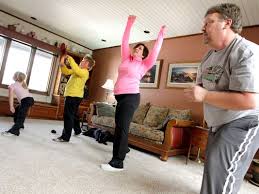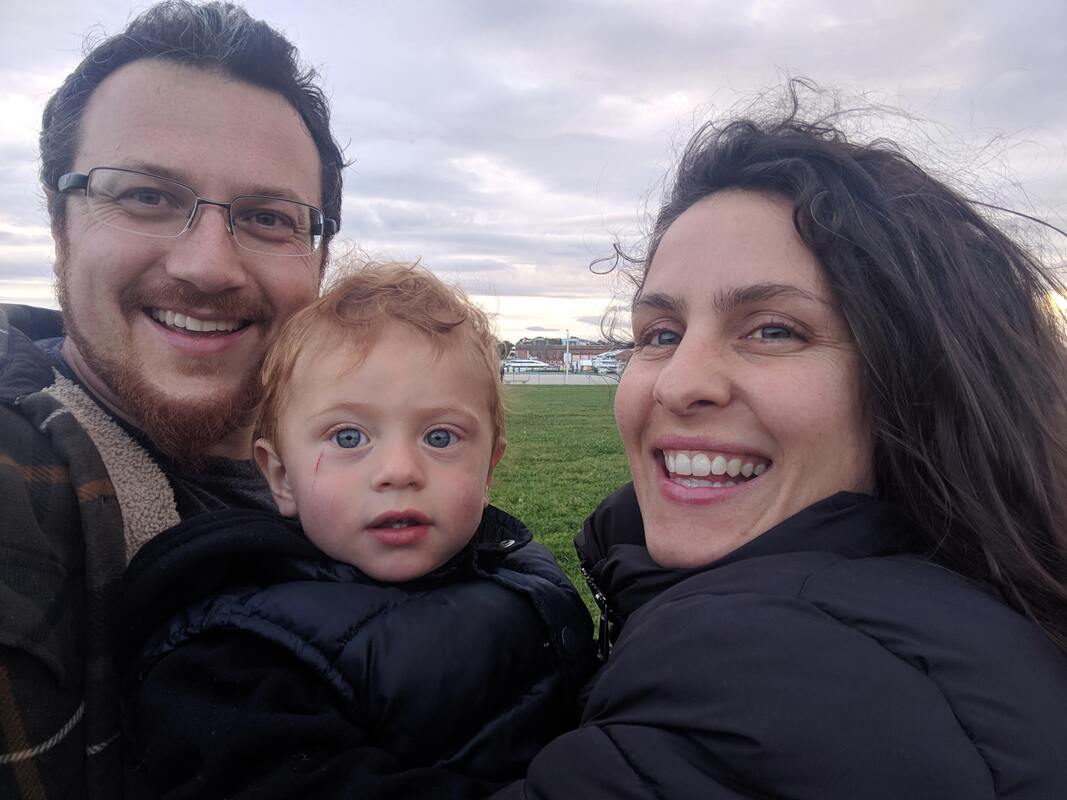 The more active we are, the healthier we are. All forms of aerobic activity or "cardio" that get us breathing harder and our hearts beating faster are associated with improvements in numerous health conditions including heart disease, hypertension, stroke, insulin sensitivity, osteoporosis, and depression. Muscle-strengthening activities (more on these in a later post) build muscle strength, endurance, increase bone density and can boost our metabolisms. And stretching exercises increase flexibility, can reduce stress and prevent injury. All three of these exercises are recommended, but how much? And how much are we getting? The Centers for Disease Control and Prevention recommend that all adults receive 2.5 hours/week of moderate-intensity* aerobic activity (30 minutes 5 days/week) and muscle-strengthening activities on at least 2 days per week; however, 80% of adults in the United States do not meet these guidelines with 51.6% meeting the aerobic activity guidelines and only 29.3% meeting the muscle-strengthening guidelines. Some of the most common reasons adults cite for not adopting more physically active lifestyles include: not having enough time, a lack of self-motivation and confidence in their ability to be physically active (low self-efficacy), find exercise inconvenient, and a fear of being injured or have been injured recently. Our environment can also affect our ability and desire to be active, for example, if we lack encouragement and support from our family and peers or if our neighborhoods lack parks, sidewalks, bicycle lanes or safe spaces. Discovering and addressing our unique barriers to physical activity should be the first step on our path to a more active lifestyle. What are your barriers? Without taking the appropriate time to reflect and become more self-aware of your own habits and roadblocks, they will repeatedly get in your way. Here are some ways to overcome common physical activity barriers, ways to make it fun and how to ensure your environment supports your goal to move more: Schedule it in. Treat physical activity like a regular part of your daily or weekly schedule and write it on your calendar. Also, keep in mind that all types of activities count as long as we’re doing them at a moderate or vigorous-intensity for at least 7 to 10 minutes at a time. Schedule in small bouts of activity throughout your day and surprise yourself with how much activity you can fit in! Make it fun! Bust out your favorite tunes on your MP3 player while hiking on the trail or power walk in the house while watching Leslie Sansone’s Walk away the Pounds. Recruit fitness buddies. Rather than meeting your friends over pizza and beer or for a latte, find a beautiful place outdoors for a walk, some flag football or a kickboxing class. If your friends aren't interested, branch out and hit up meetup.com! Set S.M.A.R.T. goals. When planning your goals, go through all the details. When and where will you do it? How will you fit it into your schedule? What do you need to get started? Writing things down often adds a level of accountability and opportunity for rewarding yourself. (More on S.M.A.R.T. goals in another post) Get a pedometer. Did you know that those who wear pedometers walk at least 2,000 more steps (1 mile!) per day than those who don’t? Fit physical activity into your daily routine: walk or ride your bike to work or shopping, walk the dog, exercise while you watch TV, park farther away from your destination, etc. Get the family on board: having a network of friends and family who support your efforts to move more and eat healthy will be fundamental to your success. Explain your desire to lead an active lifestyle to friends and family; ask them to support your efforts. Partake in post-dinner walks, coordinate a hike over the weekend or rent a Zumba video for a family workout in the living room! Leverage your lunch hour! Is there time to fit in a walk or some chair yoga into your break? Get your coworkers involved and hit the streets! Change your mindset: If your barrier is low-energy, convince yourself that if you give it a chance physical activity will increase your energy level; then, try it. You may be surprised by the result. Our mind is truly the first battleground. Learn a new skill. It’s often our lack of self-efficacy and confidence that prevents us from being active. If that’s your barrier take some time to learn an activity you’ve always been interested in, such as ballroom dancing, square dancing, or swimming. Plan for setbacks! Effective change involves small changes and problem solving. Roadblocks will always appear, whether it’s the impending holidays or rain in the forecast that may cancel your scheduled walk. Get in the habit of brainstorming specific strategies to overcome your unique roadblocks in advance so you’re prepared to overcome them! One last note on weight loss: for those striving to lose weight, it has been found that many people may need more than the equivalent of 2.5 hours/week of moderate-intensity physical activity to maintain their weight and up to 5 hours/week (~45min/day) to lose weight. Start where you’re at, reflect on your barriers and try out those tips above. *You can tell if it’s moderate-intensity by doing the talk test: you'll be able to talk, but not sing the words to your favorite song. You can tell if your activity is vigorous-intensity if you aren’t able to say more than a few words without pausing for a breath.
1 Comment
10/19/2018 02:53:06 am
Active and healthy lifestyle is the demand of every men and women but there is a lot of effort is required to maintain it. The gym and yoga ate the two ways by which the ladies can maintain their fitness.
Reply
Leave a Reply. |
AuthorHello and welcome! My name is Andrea Notch Mayzeles. I am a Certified Health Education Specialist, Mom, and Master of Public Health dedicated to the path of well-being. As a wellness professional I am committed to continued learning and am here to share research, recipes and musings on health, psychology, personal development, and parenting. I hope you enjoy! Categories
All
|

 RSS Feed
RSS Feed